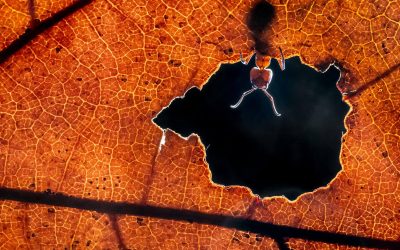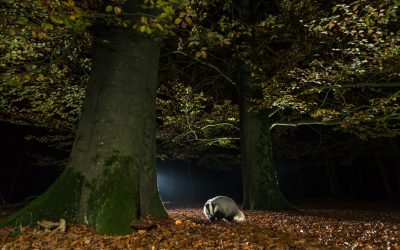What is the intriguing secret of the underwater world that stimulates a young and curious kid to become a passionate and multi-awarded underwater and conservation photographer?
To get an answer to that question, I interviewed the Spanish nature and conservation photographer Javier Murcia. Javier is a dedicated underwater photographer who focuses on both marine and freshwater fauna. He loves to spend as much time as possible beneath the water surface.
His photos have been published in various books on marine fauna, and also in calendars, posters, and brochures of various ecological foundations. His work has been and still is exhibited in museums and exhibitions. At the NPOTY contest 2018, he was runner-up in the category ‘Man and Nature’.
Currently, Javier collaborates on regional and national publications about nature and marine biology. Time to find out what drives this passionate and committed nature photographer to enter the underwater world.

Javier Murcia was born in Cartagena, a small city bathed by the Mediterranean Sea and located in the southeast of Spain. His love for photography is initiated by the love he feels for marine fauna (and in general for every animal and plant). From a very young age, he dived with goggles, snorkels, and fins, which not only led to a great interest in diving but also triggered his interest in marine fauna. It did not take long before he began to feel the itch of capturing marine species in the form of images.

Nature in action: Two cuttlefish fighting over a female, Javier Murcia
Inspiration
“I have been diving since I was 5 years old and I am very lucky to have a house just a few meters from the Mediterranean Sea and the coastal lagoon of the Mar Menor, one of the most fascinating ecosystems in Europe. That is why I dedicated myself to underwater photography. I rarely use my camera above water. And if I do, it’s usually to photograph things that have to do with the sea, like seabirds or cetaceans.
I started with diving and soon after with underwater photography, simply because of the love I had for marine biology and nature. At that time I hardly knew anyone except Jacques-Yves Cousteau. Nevertheless, over the years I discovered and followed the work of great underwater photographers. Looking at their work is inspiring, you can always learn from them. I especially like photographers who tell stories with their images, in my country, there are great photographers such as Jordi Chias, Joaquín Gutiérrez, Eduardo Acevedo, Francis Pérez, Rafael Fernandez Jr., Marc Casanova, and David Antoja.
Julio Martínez or José Antonio Oliver are photographers from where I live. Outside our borders I am a great follower of Laurent Ballesta, he is great!“

The toad in the can. Conservation photography is important from my photography point of view, Javier Murcia
Preparation
“Underwater photography and photography above the water surface are two very different things, they have nothing to do with each other. Entering the water with your camera demands more than a waterproof casing. Before starting with underwater photography you first have to be very familiar with the marine environment. For this, you have to take various diving courses and have a lot of experience, which can be achieved over the years and with many hours of diving. Once you control buoyancy, apnea, and everything that diving entails, you are ready to take your first underwater photographs. It is more complicated than it seems.
Over the years I have learned a lot about the behavior of marine animals. Now my experience as a result of the years of diving, observation, studies, and reading helps me to know when and where I have to look for the animals I want to photograph. So depending on the time of the year I look for one species or another.
As you might expect my usual approach for my photo trips is to study a species thoroughly. But there are times, albeit rarely when I just go to the water to see what happens.”

I like to photograph freshwater ecosystems. In the image a prehistoric crustacean, Javier Murcia
Signature
“Typical for my work is the use of natural light. In underwater photography, the use of natural light is complicated since artificial light is always, or almost always, needed and therefore used. I try to merge both light sources to avoid the very artificial look caused by the exclusive use of flash.
Furthermore, I like to observe, spend many hours studying a species to be able to take impressive images. So I carry out exhaustive monitoring, trying to capture the most complicated or action-filled moments. There are hundreds of hours of waiting, but it is always worth it. Like capturing the birth of a seahorse or the predation of one fish on another.
And last but not least I like the challenge of capturing rare or rarely photographed species.“

“Attacking”, highly commended in NPOTY 2017, category ‘Under Water’, Javier Murcia
Ambition
“I like my images to tell a story, I like photography to convey something. As a great lover of marine biology – I have been reading books on marine fauna and nature since I was very young – I like photography of animal behavior and conservation.
With nature photography I want people to be able to see through my photos the beauty that exists in our seabed. With conservation photography, I want to raise awareness about the global problem of pollution and overfishing of our seas and oceans. Over the years I have been able to observe how marine ecosystems have been destroyed.
I have always immortalized any moment, from animal behavior to a piece of plastic trying to be digested by a sea turtle.
I think that conservation photography is a fundamental tool to raise awareness, especially among the youth. The seas and oceans of the planet are increasingly affected by pollution, overfishing, and other negative factors. I believe that with my photography I can show the world what is really happening“

Animal behavior. Action is part of my photographic work, Javier Murcia
Photography contest
“The importance of participating in photography contests like Nature Photographer Of The Year should not be underestimated. The fact is that these contests are a great opportunity to publicize your work. Like social networks or carrying out conservation and scientific dissemination projects. That said I have to admit that I am a disaster when it comes to remembering the dates of the contests. As a result, I usually present myself to very few contests, maybe four or five a year. But I did enter for the NPOTY 2021 edition, I cannot miss a contest of such a high level. I will keep my fingers crossed, very much aware that the number of participants and the quality of their images is increasing every year.
To submit images to a photography contest it is necessary to believe in the competition and in your work. I definitely encourage all the photographers who want to live that experience, it is highly recommended.“

I like to tell stories with my images and that they have action. Two male sand dragons fighting, Javier Murcia
Social Media
“Using platforms like Instagram or Facebook is important for nature photographers. Both are leading tools as they are an important way to make your work known worldwide. Not only to see and share but these platforms are also essential tools to raise awareness for the health problems of our planet. An impressive image can go around the world in a few hours.
Many times large companies look at your work, so in one way or another it can help you in your commitment to the environment and that is always good.“

A blue crab molting, one of the images taken during confinement for a project, Javier Murcia
Covid-19 effects
“The measurements due to Covid-19 were and still are causing a very tough time. I have been lucky enough to be able to dive during a time in the pandemic because the administration gave me some permits to carry out some work on the underwater fauna and flora of the coastal lagoon of the Mar Menor. Even so, I could only dive a few meters from home, and the police stopped me a couple of times asking for my documentation. It was a nightmare.
I also worked hard on a nature photography book entitled “The Art of Photographing Nature” alongside a group of the best photographers in the world.”

Black and white photography of a sea wasp within the project: ecological inventory of the Mar Menor, Javier Murcia
At the end of the interview, I asked Javier Murcia the following question: “if you could ask another nature photographer one question, who would that be, and which question would you ask?
Javier answered: “To be honest I would simply settle for the opportunity to chat for a few hours about photography and nature with any of the photographers I have named before.”

It is also good to innovate in underwater photography, show other shapes and textures, Javier Murcia












